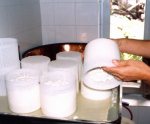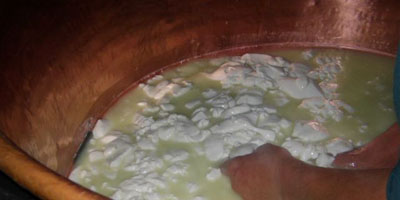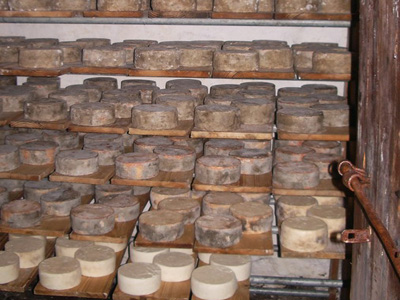

Azienda Agricola, Capra Contenta, Cresmino, CH-6654 Cavigliano
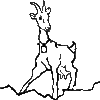 Tessiner Formaggelle - Ziegenkäse
Tessiner Formaggelle - Ziegenkäse
In our little milk-kitchen, the typical ticino
"formaggelle" is produced.
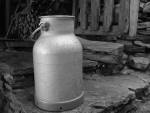 Milk is warmed, ingedients are added. It's important to watch the temperature and times
carefully. After that the amount of unfinished cheese is cutted by the cheese-harp and prepared
as long as necessary to get the now harder part of the milk. It's seperated from the rest
Milk is warmed, ingedients are added. It's important to watch the temperature and times
carefully. After that the amount of unfinished cheese is cutted by the cheese-harp and prepared
as long as necessary to get the now harder part of the milk. It's seperated from the rest
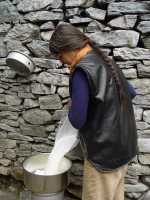 and filled into cheese-moulds where it is packed warm and turned-over an amount of several times.
The next day we put it outside the mould again and bathed some hours in the salt-bath. After
that it's brought to the old basement, where the cheese needs to mature one month until it's
ready for selling. During this time we clean and wash it every day and turn it around. When it's
ready we pack it, weight it and then bring it down to the valley to our shop an a big backpack and
walking, because there's no street down from the summer-alp to valley.
and filled into cheese-moulds where it is packed warm and turned-over an amount of several times.
The next day we put it outside the mould again and bathed some hours in the salt-bath. After
that it's brought to the old basement, where the cheese needs to mature one month until it's
ready for selling. During this time we clean and wash it every day and turn it around. When it's
ready we pack it, weight it and then bring it down to the valley to our shop an a big backpack and
walking, because there's no street down from the summer-alp to valley.
What else is in such a cheese?
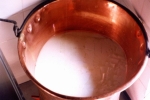 For one kilogramm of cheese you need 10 litres of goat-milk. That's a whole big bucket full of it.
Milking is a beautiful but hard work. Till you get that bucket you need much time and energy.
Nine litres of milk is about the amount that four goats will give you at one day. These four goats are fed
milked and taken care of. Also in their first year of live and in autumn and winter, when they don't give milk.
The feed for them has to be bought and brought up to the alp, the hay has to be cutted and the cot has
to be maintained and cleaned.
For one kilogramm of cheese you need 10 litres of goat-milk. That's a whole big bucket full of it.
Milking is a beautiful but hard work. Till you get that bucket you need much time and energy.
Nine litres of milk is about the amount that four goats will give you at one day. These four goats are fed
milked and taken care of. Also in their first year of live and in autumn and winter, when they don't give milk.
The feed for them has to be bought and brought up to the alp, the hay has to be cutted and the cot has
to be maintained and cleaned.
 You have to clean the buckets, cans, moulds and all the other stuff. Every cheese is turned-over and cleaned
very day - that's about 40 times after bringing it down into the basement.
You have to clean the buckets, cans, moulds and all the other stuff. Every cheese is turned-over and cleaned
very day - that's about 40 times after bringing it down into the basement.
Whould you have thought of
this while eating something that usual as a cheese?
